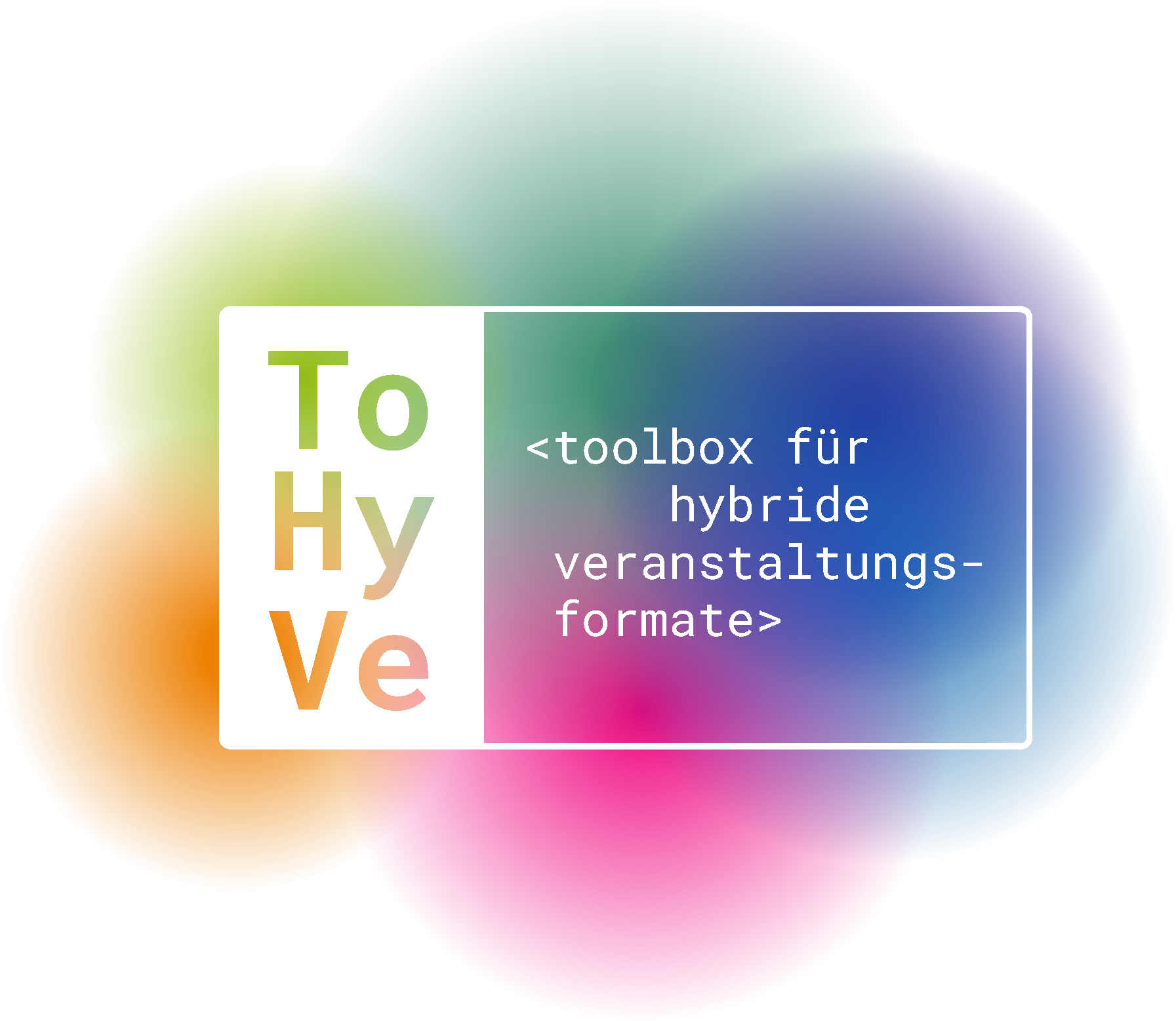Toolbox for hybrid event formats -
ToHyVe
Our objectives
The changes in business communication triggered by the COVID-19 crisis will be permanent. Companies have learned that the majority of meetings can also be conducted online, which saves a lot of travel and costs. These changes also have positive effects in terms of climate protection. However, the methods of telepresence and hybrid event formats still have to be significantly improved in order to generate broader acceptance and thus strengthen the sustainability of this development. For these reasons, the aim of the project is to develop a toolbox that can serve a variety of event formats - taking privacy and security into account. This includes in particular the following application scenarios:
- Guided tours through a showroom:
Virtualization of showrooms so that they can be walked through virtually and experienced immersively. - Lectures:
Physically present (analogue) and online (virtual) speakers should be able to give lectures that can be followed by analog and virtual viewers, with interactions between speaker and audience being possible in any combination. - Mixed panel discussions:
Analogue and virtual panel members should be able to see and interact with each other and also be able to perceive the audience. - Workshops:
Analogue and virtual workshop participants sit together in a group. Virtual participants are presented in such a way that all participants can see and interact with each other. - Networking:
Analogue and virtual participants should be able to talk to each other in a bar table situation. Virtual participants should have the same networking experience as their analogue participants. - Social Media:
The integration of external contributions/social media should enable the processing and presentation of external contributions using technologies such as sentiment analysis, clustering/summary, ranking, match making. - Trade fair/exhibit presentations:
Virtual exhibition booths are set up, in which products or other exhibits (e.g. paintings, sculptures) are exhibited and in which exhibits are explained by people either through videos or online in mixed reality environments. - Conversational Concierge:
Analogue and virtual participants are received through a text and voice-based chatbot dialogue system. The chatbot summarizes what has happened so far, points out important topics and content, answers questions about the event and can be used during an event as well as for subsequent use of the logged and annotated event. - Town Hall Meetings:
Interactive presentations involving the audience e.g. in questions/answers
